#chagall
Text
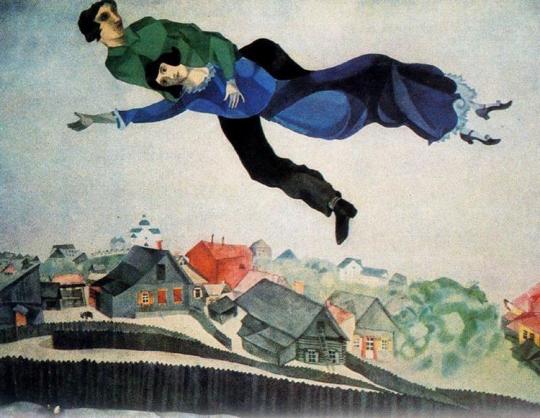
Over the Town, Marc Chagall, 1918
#art#art history#Chagall#Marc Chagall#genre painting#Expressionism#Expressionist art#Jewish art#Russian art#Russian-French art#Belarusian art#20th century art#modern art#oil on canvas#Tretyakov Gallery
442 notes
·
View notes
Text
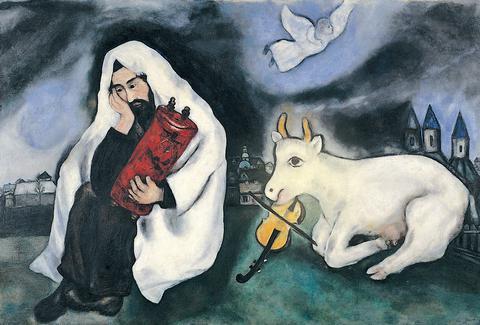
Marc Chagall, Solitude, Oil on Canvas, 1933, Tel Aviv Museum of Art, Tel Aviv-Yafo. (source) © ADAGP, Paris, 2019
69 notes
·
View notes
Text
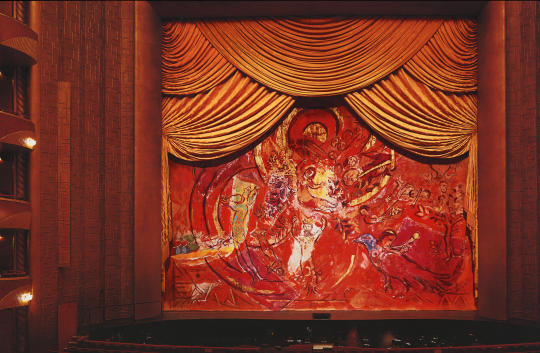

Marc Chagall - Stage curtain for Mozart's 'The Magic Flute' (Finale)
Created with the collaboration of Volodia Odinokov
casein, aniline and gold-leaf on linen
526.5 x 780 in (1337.31 x 1981.2 cm)
Designed, created and painted by Marc Chagall in 1966-67; Executed and painted by Volodia Odinokov in 1967
#art#paintings#marc chagall#chagall#Volodia Odinokov#The Magic Flute#mozart#curtain#symbolism#modernism#expressionism#fauvism
57 notes
·
View notes
Text

Marc Chagall
Deux têtes à la main, 1964
#marc chagall#chagall#sculpture#midcentury modern#modernist art#art#french artist#french art#expressionism
110 notes
·
View notes
Text
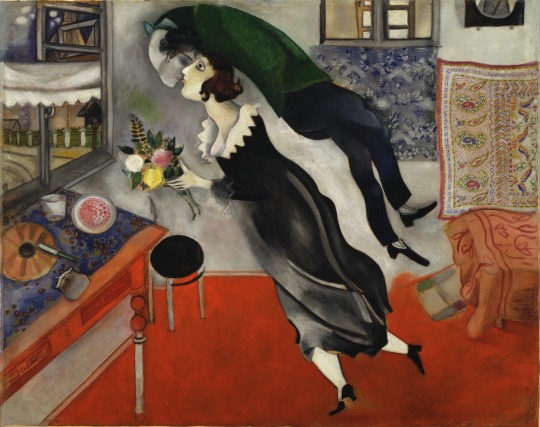
Marc Chagall, 1915, “Birthday”
226 notes
·
View notes
Text

#lensblr#photographers on tumblr#original photography#original photographers#original photography on tumblr#chagall#museum
20 notes
·
View notes
Text

Marc Chagall (1887-1985) - Si mon soleil, 1968.
19 notes
·
View notes
Text
Marc Chagall (1887-1985)

View On WordPress
56 notes
·
View notes
Text



marc chagall and his luftmenschen in love. happy valentine's day 🎻
the artist depicted himself with his wife bella rosenfeld
over the town (1918)
the promenade (1918)
the birthday (1915)
#marc chagall#art#artwork#painting#cubism#expressionism#lovers#valentines day#1910s#1920s#chagall#luftmenschen
8 notes
·
View notes
Note
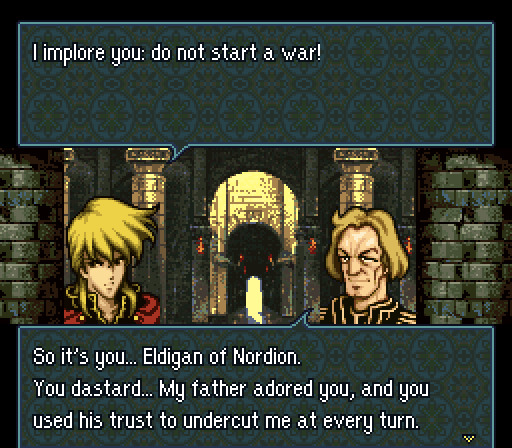
What better way to get started than with Fire Emblem's favourite word, dastard, which appears in just about every game, be it officially or unofficially translated? This shot in particular is from the new (fan)translation of FE4, but it was present in the older one as well. Fans often seem to assume it's just a butchering of "bastard" (for ratings reasons) without realising that it is a real word with a real meaning.
( "Implore" is also a possible candidate, and perhaps also "adore" and "undercut" as well if you want to be thorough. )
An Emblematic starting word, indeed!
Fire Emblem's relationship with pejoratives is an interesting one, and while dastard is definitively a distinct word from bastard, I do think there is a relationship between the use of old-timey insults and the need or desire to keep things "Nintendo-friendly." It was rare to see even a damn in the first localized games, and part of the way localization circumvented this was to have the characters use epithets that sounded... well, medieval. Hence your craven!s and your cur!s and, if you're feeling extra spicy, your craven cur!s. I'm actually hard-pressed to recall a usage of dastard in at least FE7 (which was fond of blackheart in similar circumstances); maybe the ESRB thought it was a little too close to the B-word for comfort.
Of course, as the series settled comfortably into a consistent "T for Teen" rating, sensibilities surrounding language loosened up. Awakening was the first game to see characters swearing on a fairly regular basis— up to and including bastard with a B! Yet we still see dastard often enough in modern FE games, which should put to rest the notion that it's merely a euphemism for a more offensive term. They're used differently, and that boils down to both meaning and tone.
(This is where I was initially going to expound on bastard, but just as that section of the post was getting to be too long, an angel of mercy sent an Ask for that very word. So stay tuned, all you beautiful bastards.)

Kidnapping is, of course, Dastardry 101.
So, what exactly does it mean to be a dastard? Merriam-Webster gives two definitions: 1) “coward,” and 2) “a person who acts treacherously or underhandedly.”
While people do seem to assume dastard as it appears in FE is a willful typo, I’d wager most of you have actually heard its adjectival form: dastardly! Yes, that’s an adjective, not an adverb, despite the -ly ending— same with words like friendly and unsightly.
If the context hasn’t made it clear by now, these words are practically synonymous with villainy. But we’re not just talking any old villain: the key word in the above definitions is underhanded. Dastard carries the sense of cowardice with it because it’s associated with backstabbing, behind-the-scenes scheming, sneak attacks, and just generally dirty tactics. Arguably the most famous “dastard!” in Fire Emblem is directed toward Arvis in Genealogy of the Holy War, and it’s patently well-deserved. And even though Chagall in the asker’s provided screenshot might be projecting juuust a little bit, he actually does well to give us some context clues, as he accuses Eldigan of getting close to his father in order to get one over on Chagall— which, if it were true, would certainly qualify as underhanded. Not as underhanded as murdering your peace-loving king and father, maybe, but who’s to say.
So while modern audiences will sooner associate this word with being a villain than with merely being a coward, it’s important to note that not every villain is a dastard. Your big, strong, honest warlord types— Walhart, for instance— are generally not going to be very dastardly. Neither are your force-of-evil gods and monsters… after all, who needs trickery and deception when you can turn your foes to stone, incinerate them with your breath, or simply eat them? And while yes, dastard and bastard are different words, one commonality you might have noticed is how male-gendered they both are in practice. Nothing whatsoever is stopping a woman from being a dastard, but it’s unlikely she’ll ever be called one.
As for the other words:
Implore basically means beg, though it implies a little more dignity. Rather than falling to your knees, folding your hands, and crying a lot, you need a more strategic and sophisticated approach when imploring. Eldigan’s completely sincere in his desire to put a stop to Chagall’s warmongering, but he doesn’t lower himself upon asking.
Adore means love, especially in a worshipful or fawning way. While it can still be used in an earnest way, it's just as often tinged with condescension, implying disdain for the adorer, the adoree, or both. I’m not sure when adorable came to be synonymous with cute, but I think there’s an intentional hyperbole in that usage that became lost as it became common. Chagall may likewise be hyperbolizing, intent as he is upon framing Eldigan as… well, a manipulative dastard. Having already learned his true feelings toward his father, what's meant to communicate sympathy for the king to Eldigan rings hollow and ironic to the audience.
Undercut as used here means the same as undermine, which is to weaken or make useless via subtle or covert means. It’s all very underhanded… or shall we say, dastardly. Undercut does have more of an association with direct competition or rivalry, though, which gives the sense that part of this may be personal to Chagall.
Well, I think that covers everything! Tune in next time, when we discuss dastard’s edgier, PG-13 cousin. Oh yes, I was serious.
#fire embem#vocabulary#dastard#insults#noun#fe4#genealogy of the holy war#chagall#eldigan#corrin#fates#fe14#conquest#implore#adore#undercut#verb
104 notes
·
View notes
Text

Marc Chagall, The Falling Angel, 1947
75 notes
·
View notes
Text

Stained glass windows by Marc Chagall representing the twelve tribes of Israel, in the synagogue of Hadassah Hospital, Jerusalem.
46 notes
·
View notes
Photo


More Chagall. Lovers at night.
22 notes
·
View notes
Photo
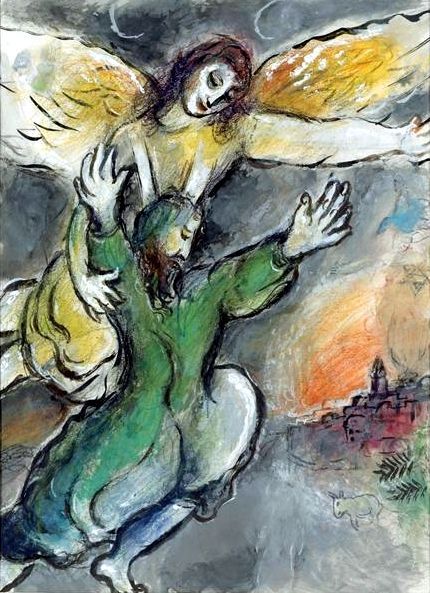
[Chagall :: Blessing]
* * * *
There is an old Jewish legend that in any point of history, there are 36 pure souls on whom the fate of the world depends, and they don't know who they are. These 36 people hold up and support the world just as the foundations of a building support it. It’s likely these are unknown and unsung people, who do extraordinary things that go unnoticed.
There are always 36 good people. Who save the world. One of them could be you.
[Jim Palmer]
29 notes
·
View notes

